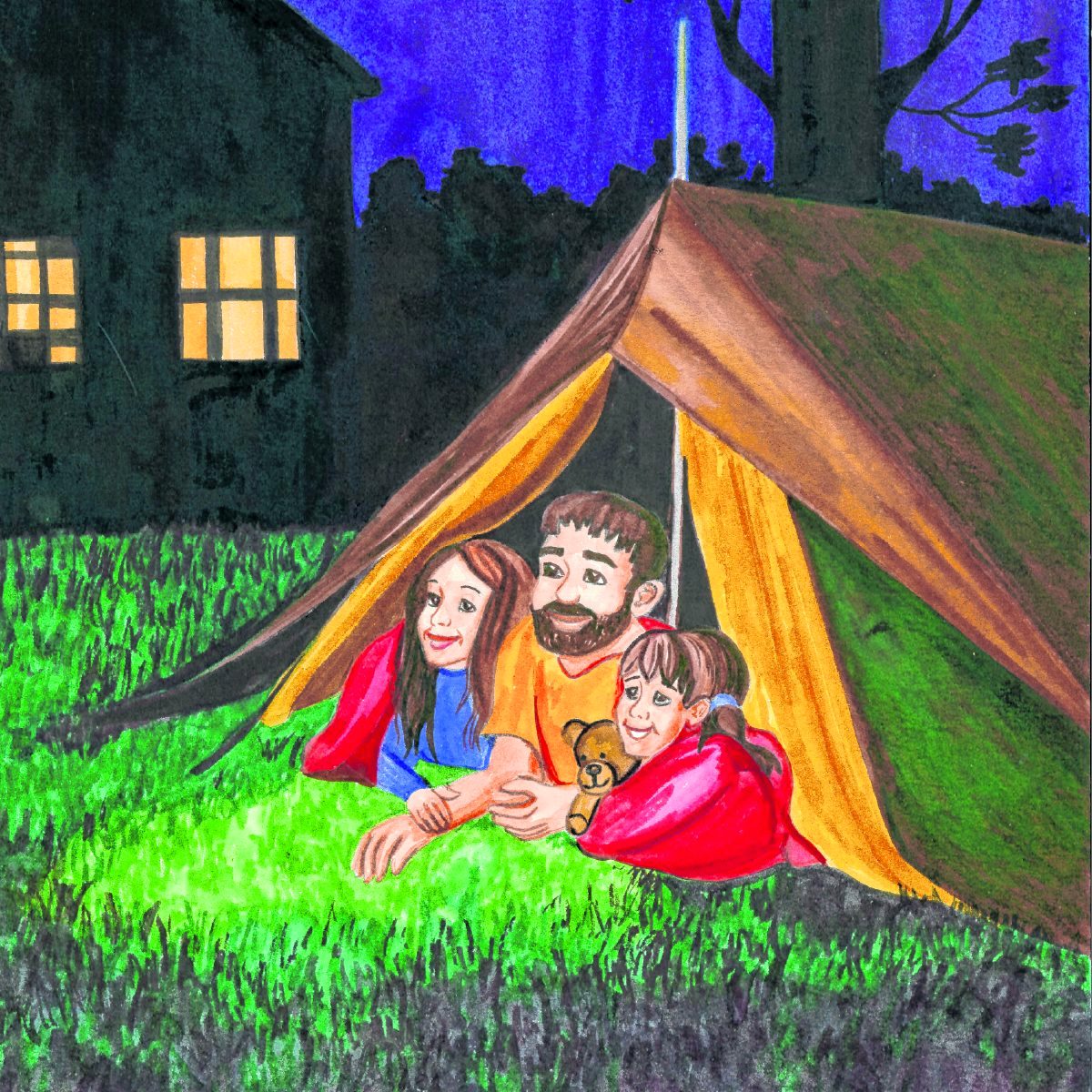Throughout the new book, “Love, Hope: Children Express Their Emotions During the Coronavirus Pandemic,” area children share their simply yet wise observations about the past 12 months.
“Coronavirus has really changed the world. Getting the flu is one thing, but this stuff is serious!” one child wrote. “If I had to think of my worst memory right now, it would be worrying about the virus before we really knew much about it,” reads another letter.
“I know masks protect us from germs, but I feel bad when I see people wearing them. Not because I think it’s dumb, but because I don’t like coronavirus,” a child wrote.
[sc:text-divider text-divider-title=”Story continues below gallery” ]
Author Kimberly Hoffman has filtered the past year of COVID-19 pandemic through the emotions of local children. The book takes the actual responses of kids interviewed by their parents about the pandemic, expressed as letters to the fictional character named Hope.
Living through such a frightening, chaotic period in our history, the children who took part offered clear-eyed take on the past 12 months. Hoffman hopes that it can become a source of comfort for kids — and adults — during these pandemic times.
“As an adult, there are days that I have really weird emotions. I get overwhelmed and feel like I’m going to cry, and sometimes I don’t even know why,” she said. “These kids have to be going through the same thing, and they’re a child. They don’t have the skill set to know what to do with those emotions.”
The idea for the book came about after one of Hoffman’s friends encouraged her to write a book about the coronavirus pandemic. The Columbus author has penned four children’s books: “Emma’s Dancing Day,” “Sigmund Stanley Spider Squared,” “Pete the Brave” and “Cleo and Roger Discover Columbus, Indiana.”
At first, she was unsure she could fit it into her already busy slate of projects. But the idea would not go away.
“God was telling me I had to write this book,” she said.
Committed to putting it together, she pondered what kind of book she would write, reflecting on how tumultuous the year had been.
“Most people have not been through anything close to this magnitude unless they are old enough to remember small pox or polio outbreaks,” she wrote in the book’s preface. “Living in quarantine, being safe and social distancing have taken a toll on all of us.”
Hoffman decided to structure it like letters written between her protagonist, Hope, and local kids. She reached out to friends, followers on social media and colleagues, sending them 11 questions to ask with their kids. Her instructions were to simply write what the children said, not to edit or insert their own thoughts.
“I wanted to draw them out. I didn’t want it to be a yes-no question. I wanted them to give some background on how they felt about things,” she said.
The answers Hoffman got back were mesmerizing. Kids ranging from preschool to middle school-aged shared a wide array of emotions: anxiety, fear, frustration, anger, optimism and hopefulness.
“I had some kids who were very optimistic and very upbeat. One little girl was angry — you could hear it come across in her letter,” Hoffman said. “One little girl was sad and scared. So I wanted all of that to come through.”
Hoffman took pieces of those responses to craft into letters in the book, creating a dialogue between them and Hope. Hope answers their varied emotions with encouragement as well as empathy.
To compliment the words of both Hope and the kids included in the book, Hoffman enlisted Franklin artist Kira Brant to create the visuals for each back-and-forth.
“She put together different pictures to put on the pages that showed the different kids. That turned out really cool,” Hoffman said.
To help families talk about the pandemic and other serious issues together, Hoffman included discussion questions as a resource. She felt it was important to help children under that it’s OK to feel whatever it is they feel, and how to deal constructively with their emotions.
The book was an entirely local affair. In addition to Hoffman and Brant, local connections made the entire project possible. Paul Hoffman, Kimberly’s husband and owner of PathBinder Publishing, published the book. Anna Perlich of Columbus designed the covers and formatted the children’s letters. The book was edited by Franklin resident Lori Haggard.
All but one of the kids who supplied the information for the letters are Johnson and Bartholomew county residents.
“Love, Hope” is already out digitally, and will come out in print this month.
Hoffman hopes that people take a sense of optimism from the letters. At one point in the book, a boy named Zachary writes about COVID.
“I had a dream the other night — COVID was gone and everything was back to normal. We could be with our friends and see our teachers at school. It was awesome. When I woke up and realized it was a dream, I didn’t get sad. I know this is part of life and stuff happens sometimes. Once we get the antidote or vaccine, we’ll be safe again,” he wrote.
[sc:pullout-title pullout-title=”At a glance” ][sc:pullout-text-begin]
“Love, Hope: Children Express Their Emotions During the Coronavirus Pandemic”
What: A thought-provoking exploration of young children’s emotions, thoughts, and attitudes during the COVID-19 pandemic.
Who: Written by Columbus author Kimberly Hoffman, illustrated by Franklin resident Kira Brant
How to get it: https://www.amazon.com/~/e/B01MYYH3OI
[sc:pullout-text-end]





